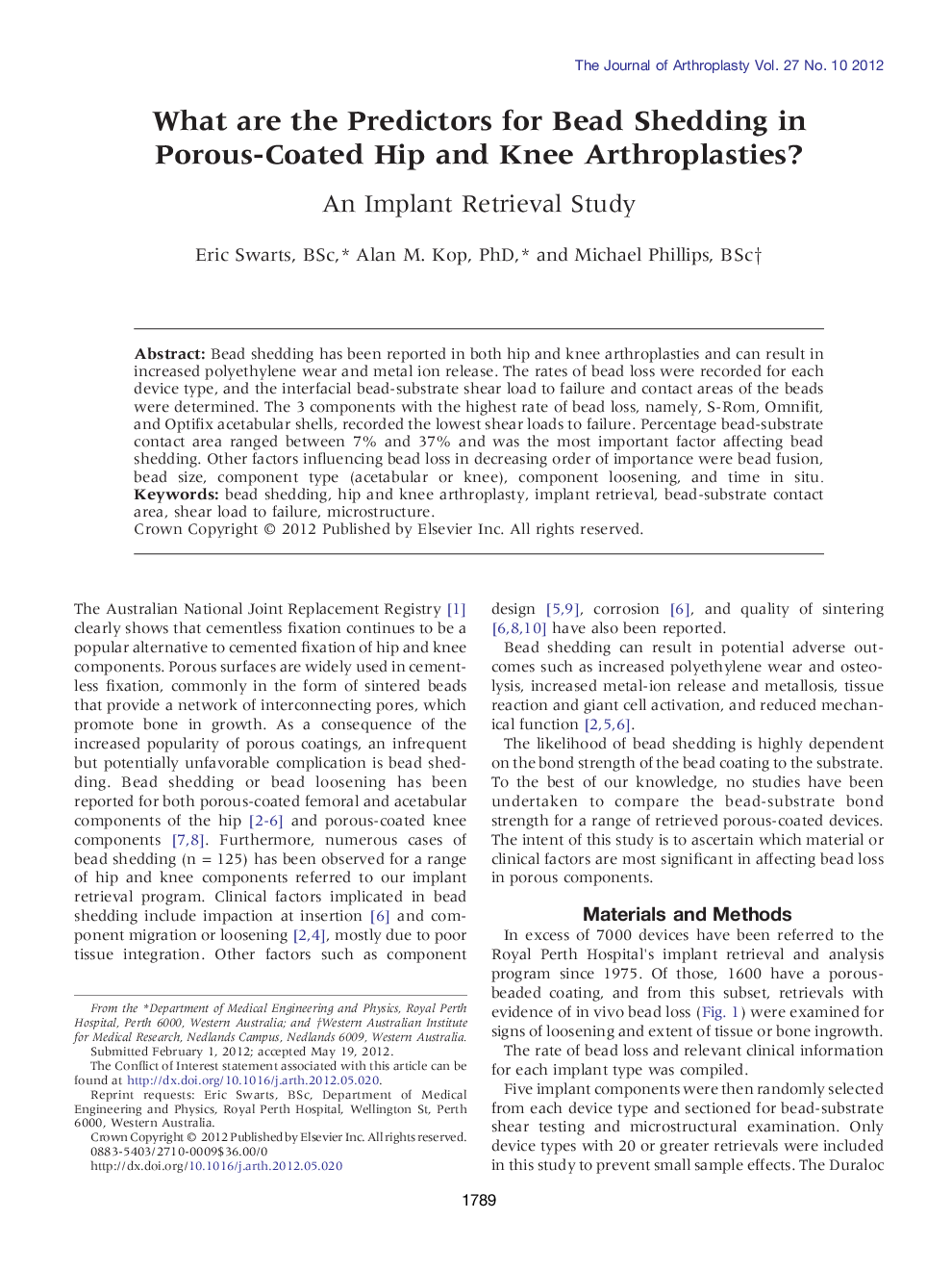| Article ID | Journal | Published Year | Pages | File Type |
|---|---|---|---|---|
| 4061805 | The Journal of Arthroplasty | 2012 | 7 Pages |
Bead shedding has been reported in both hip and knee arthroplasties and can result in increased polyethylene wear and metal ion release. The rates of bead loss were recorded for each device type, and the interfacial bead-substrate shear load to failure and contact areas of the beads were determined. The 3 components with the highest rate of bead loss, namely, S-Rom, Omnifit, and Optifix acetabular shells, recorded the lowest shear loads to failure. Percentage bead-substrate contact area ranged between 7% and 37% and was the most important factor affecting bead shedding. Other factors influencing bead loss in decreasing order of importance were bead fusion, bead size, component type (acetabular or knee), component loosening, and time in situ.
